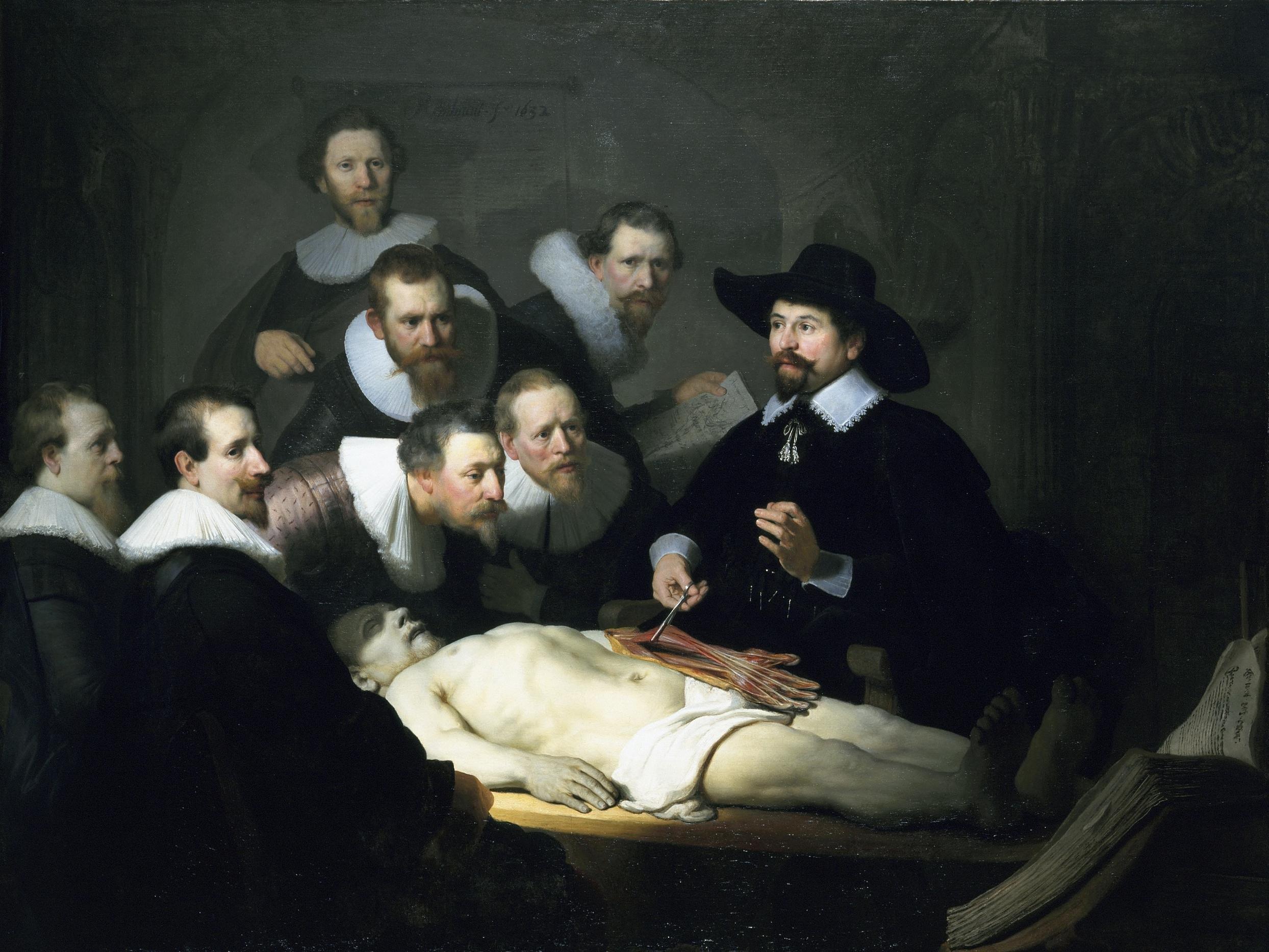It must have been very cold that January 31 1632 in Amsterdam when Adrian Adrianeszoon, known in the slums as “Het Kindt”, was hanged for yet another robbery attempt. Adrian Adrianeszoon had behind him a respectable criminal career made of theft and violence and in the past the Dutch justice had already made him amputate a hand. It’s a pity that with the remaining one, the good Adrian one day tried to take the cloak from a gentleman, perhaps considering him an easy prey, a gentleman who, however, put up a strenuous resistance succeeding in having him arrested. The placid Calvinist bourgeoisie that dominates Amsterdam, then a city of about two hundred thousand inhabitants in strong expansion, tolerates very badly these exceptions to laboriousness and morality so typical of their class and, considering the recidivism, opts for the death penalty aggravated by the dissection of the corpse. The anatomical dissections were held once a year, strictly in winter to avoid rapid decomposition and always on sentenced to death, at the former convent of St. Margaret converted into an abattoir after the Protestant reform even if in 1629 they were temporarily moved to the tower at St. Anthony gate, not far from the meat market.
Once deposed from the gallows, the corpse was transported with a sort of procession to the anatomical theater set up for the occasion. The operation lasted three days and began rigorously with evisceration so as not to run into easily imaginable miasmas. The Dutch liked to see a criminal torn to pieces and to watch the show they were willing to buy a ticket not even that cheap. The dissections in fact earned a sum not despicable to the guild of surgeons, i.e. the organizing entity of the event: we are talking about amount that could reach 200 guilders (the equivalent of seven fat pigs) from which were to be deducted the expenses for the executioner, music, food for guests and incense to mask the smell of the corpse.
The privilege of sinking the scalpel into the poor man’s flesh was up to the anatomy preceptor, a charge then covered by Dr. Nicolaes “Claes” Pietersz, better known as Tulp (note that in spite of the charge Tulp was only at his second dissection). The idea of changing his name to Tulp (tulip) as a good luck charm must have come to him because of the importance of tulips in the Dutch economy of the time and obviously it worked because at the age of forty he was already a highly respected doctor, he occupied a prestigious position and in a few years he also entered politics and became mayor of Amsterdam (who knows if after the terrible Tulip Mania he went back to being called Pietersz but never mind). The fact is that Dr. Tulp and some of his most esteemed colleagues decided to be immortalized in the act of dissecting the corpse concerned and to do so they chose a young painter who in those years had moved to Amsterdam from his native Leiden trying to make his way in the world of rich commissions of the capital: Rembrandt van Rijn.
Although it cannot be ruled out that Rembrandt witnessed the dissection, perhaps making a few sketches, the painting was executed later to be restored and probably manipulated in the course of the next century: radiographic analysis proved the addition of the right hand, the inclusion of the first surgeon on the left, the deletion of the hat of the one standing in the background and the rewriting of the list of participants on the paper held by the character next to Tulp. The portrayed surgeons paid a fee to appear in the painting, those in the center twice as much as the others, and paved the way for Rembrandt for a successful series of group portraits then in vogue.
Tulp is depicted mimicking with the fingers of his left hand the movement caused by the muscles and tendons he is lifting with pliers, the others observe flaunting a variety of moods between interest, surprise and a hint of dismay, but there’s a catch. The flexor muscle, the one that makes the movement mimicked by Tulp possible, is on the outside of the forearm and not on the inside as shown in the painting. In the past many people have wondered about the meaning of the error, all the more macroscopic if we consider that the clients, being part of the same trade, must have noticed it first. There is no answer, but the most sensible hypothesis is that the members of the guild of surgeons did not care much about the scientific accuracy of the performance as long as it benefited the theatricality and a sort of ideal vision of their activity. For Rembrandt it would have been impossible to show the part of the arm that was really interested, and I do not think that at the time, outside the circle of subjects portrayed, there were many who were able to detect it. On the other hand, one cannot even notice the cuts and sutures of the evisceration (which must have already taken place) and the hand, which the corpse was missing, may well have been added by the author himself, perhaps following a precise request of the clients tending to maintain a certain decorum.
And here to you the Doctor Tulp while he slices a wretch under the careful eyes of his colleagues in the Year of Our Lord 1632:
